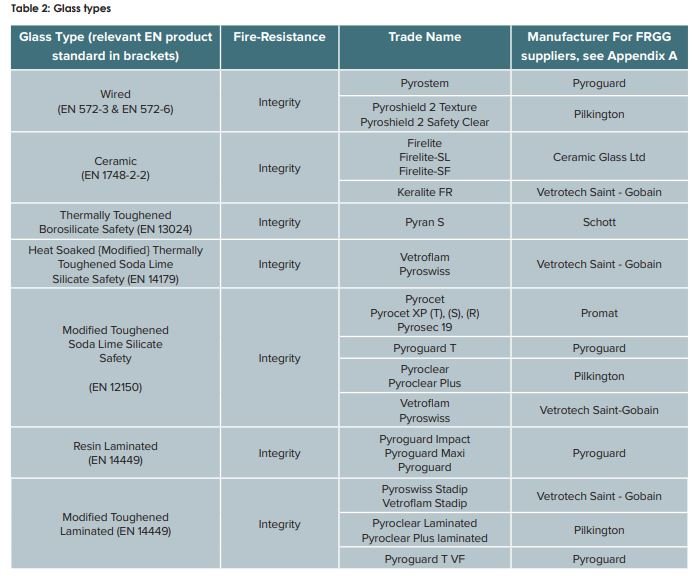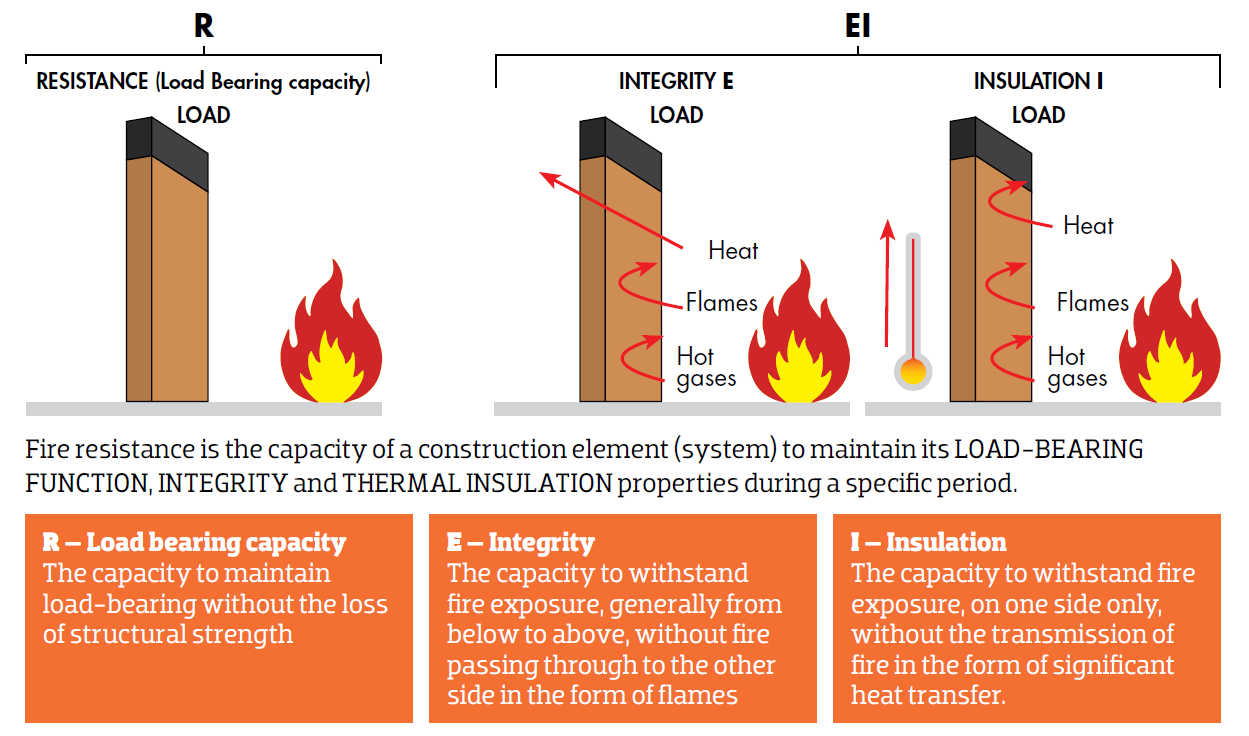class a fire rating canada
Exterior wall construction can be classified by its fire-resistance. Class B Flammable Liquids.

Where When And What Type Of Fire Rated Glazing Should Be Used For 60 Minute Applications Safti First
A product must be also be classified as a Class 1 building material for BS 476 - 71997.

. A good rating Class A or Class 1 in this test means the material is almost entirely non-flammable doesnt burn easily. Increased Fire Protection Class A Fire Rated Installs like a Standard Cap Incorporates Graphite Technology with premium SBS cap sheets for enhanced performance and fire resistance. Cooking Oils and Fats.
The first is based on Underwriters Laboratories UL Test No. A fire-resistive rating is the time that exterior wall construction can withstand fire exposure as determined by a. The score is relative and balanced between asbestos cement sheet with a score of 0 and pure red oak with a score of 100.
Flammable Liquids and Gases. Flame spread 26 to 75 other FR surface coatings Class C or III. Fire-rated assemblies are tested and certified in their.
Larger furnace openings allow clients to maximize the number of doors tested with minimum. Elements of buildings the fire-resistance rating classifies the ability of an assembly to confine and isolate fire within a zone comprised of fire resistance-rated walls ceiling and floor assemblies. Another method used for comparing the combustibility of materials is to evaluate the heat release rate.
Class I or A 0 - 25. They are typical fuels for house fires. Building materials having a very moderate fire contribution.
Flame spread is primarily a surface burning characteristic of materials and a flame-spread rating is a way to compare how rapid flame spreads on the surface of one material compared to another. These are the no flashover materials. Flame spread 25 or less FRTW some FR surface coatings Class B or II.
Wood-frame assemblies are normally tested with no end. The ULC listed Design Oxxx in Figure 1 is an example of a specific assembly tested to the requirements for a fire-resistant design by ULC for conformity with NBCWhen implemented in the construction exactly as it is laid out in the designs description it will provide a one-hour fire resistance ratingthe supporting data has been collectedbased on the required testing. In most situations water is still the most widely used fire extinguishing agent.
To achieve a Class 0 Fire Rating products must meet specific British Standards and pass a series of tests designed to test flame spread and propagation. These materials are effective against severe fire exposure. The classification system provided by the NFPA allows architects and engineers to.
Most commercial wood species have a flame spread index between 90 and 160 Forest Products Laboratory 1999. FSI is the measurement for the speed at which flames progress across the interior surface of a building while SDI measures the amount of smoke a sample emits as it burns. Ordinary combustibles are the sorts of materials that you will often find around the house.
It is available with either a Class A or Class C fire rating and meets ASTM D-5319 standard specification for glass-fiber reinforced polyester wall and ceiling panels. In the event of a fire early detection and suppression is essential if damage and loss are to be minimized. The product must first meet the fire propagation requirements as outlined in BS 476-61989A12009.
This rating determines how a building material is going to react in a fire. The class is always combined with an additional class for smoke s and burning droplets d B As class C but satisfying more stringent requirements. When conducting healthcare renovations almost all facilities require.
Class A fires are fuelled by wood paper cloth and plastic. Class A or I. Rough the E84 test both the Flame Spread Index FSI and Smoke Developed Index SDI are reported for a given sample.
Class A materials have an FSR of 0 to 25. Class II or B 26 - 75. Class A fire retardants have a flame spread rating of between zero and 25.
Limited extend contribute to fire. UL offers full certification services for fire doors fire door hardware and fire windows which allows companies to demonstrate compliance with opening protective requirements in the National Building Code of Canada and various provincial building codes. Flame-spread rating requirements are applied in the National Building Code of Canada NBC primarily to regulate interior finishes.
Class B fire retardants have a flame spread rating of between 26 and 75. It is abundant effective and inexpensive. The most stringent rating available for building materials is Class A.
The ratings relate to fire tests designed to determine how quickly fire can raise the temperature to unacceptable levels. Flame spread 76 to 200 untreated lumber and plywood FRTW must have a flame spread of. The fire-resistance rating of the tested assembly will indicate as part of design limitations the restraint conditions of the test.
Numeric values for Class B are between 25 and 75. Knowing about the fire classification of the cladding materials is important. A Class 1 or Class A fire rating means that the building material is highly resistant to fire and does not spread flames quickly.
When selecting a fire-resistance rating it is important to ensure that the restraint conditions of the test are the same as the construction in the field. It helps in choosing the best materials that can ensure optimum fire safety standards for your home. Canada 1-855-IKO-ROOF 1-855-456-7663 or isit our ebsite t IKOCOMCOMM.
Used in fire hoses sprinklers water mist systems and some portable extinguishers. The four classifications of fires are. 723 and is called the Surface Burning Characteristics Rating or Flame Spread Rating.
Conclusion If you have a facility with a higher fire risk you may want to consider using a wallcovering that has a fire rating of Class A. Water is one of the best extinguishers for this class of fire. FiberLite cleans easily with steam high-pressure sprayers or soap and water and is USDA and Agriculture Canada certified.
These materials are effective against severe fire exposure. Class A has an FSR of 0 to 25 making it is able to withstand fire for longer than any of the other classifications. They are the combustible materials that can have some contribution to the fire in your building.
Class III or C 76 - 200. The class is always combined with an additional class for smoke s and burning droplets d. Values above 75 fall into the Class C category.
Class D Combustible Metals. The five classes of fire are. In the flame-spread rating test a score of 0 to 25 constitutes a Class 1 rating.
Class A Ordinary Combustibles. Flame-Spread Classification Flame-Spread Rating or Index. Class C Electrical Equipment.

Fire Rating Classifications Guide Fire Retardants Inc

Hardstop Panels Feature A Fiberglass Core For Superior Durability Impact Resistance And Class A Fire Rating Available In The Paneling Brand Colors Formica

What Is Euroclass Fire Rating Reaction To Fire Gustafs Scandinavia

Your Guide To Fire Resistant Glass And Glazing

What Is Euroclass Fire Rating Reaction To Fire Gustafs Scandinavia

Reaction To Fire Vs Fire Resistance

Types Of Fires Kidde Fire Safety

Intumescent Fire Resistant Water Based Paint Fire Painting Fire Protection